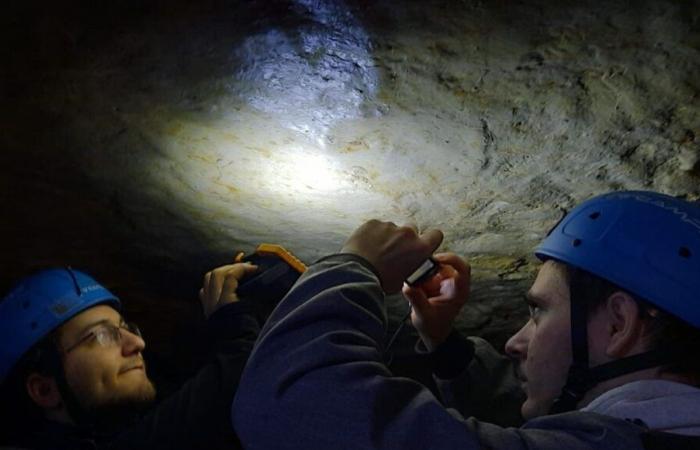“You see these traces on the ceiling? We wonder if this is not the sign of the passage of a prehistoric animal. A large fish, an invertebrate or a turtle which passed through there 160 million years ago , which left traces in the mud, traces which were sedimented and transformed into rock concretions over the millennia. This is one hypothesis among others which still remains to be confirmed. Christophe Durlet has eyes that shine. This professor of geology from the University of Burgundy entrusted a mission to 13 students from the master’s degree in “Sedimentology, paleontology, geochemistry and georesources” in Dijon. Everyone is embarked on a unique adventure: draw up a three-dimensional map of the Bèze caves.
loading
To do this, students use sophisticated tools for a day. “For my part, I scan the walls with an ultraviolet projector which highlights the traces of bacteria on the rock” explains Louise Montfort, future geologist “We can see where life develops in such an environment.”
Pierre Baux, also a student, walks around with a tablet equipped with powerful modeling software. Almost in real time, by filming the walls he can make the room of the cave where he is located appear in three dimensions on his screen. By sweeping the screen with his finger, he can tilt the plane before his eyes, consider it from another angle and zoom in on areas that we do not necessarily look at when we remain at ground level.
Olivier Estran

Olivier Estran
Traces of prehistoric animals?
Christophe Durlet, the geology professor who is leading this expedition, takes a seat on a boat that usually takes tourists out, and directs what could look like a large plastic microphone towards the ceiling. “It’s a Lidar (a kind of radar, extremely more precise -editor-)” he specifies. “It records all the details of the walls, and restores them in 3D on a computer image. So we pay attention to details that had previously escaped us or that we had never thought to look at carefully.”
“Do you see these rectilinear furrows on the ceiling? We find a good dozen of them in the cave. We wonder if these are the traces of prehistoric animals which left traces in the mud, which then sedimented. Well it is also possible that these are galleries of prehistoric worms which have fossilized. At the end of this inspection, I lean more towards this second hypothesis. explains Christophe Durlet.

Olivier Estran

Olivier Estran
Visit the caves like in a video game
The caves of Bèze, whose underground network extends over three kilometers, are formidable witnesses of life present here 160 million years ago. “We know it looked like the Bahamas” smiled Ethan Jean, one of the students. “Here on the ceiling, we have just found a fossilized sea urchin spine. Using all the tools at our disposal and carrying out this type of mission is a bit like Christmas for us!”
All the information collected and the maps recorded will now be put through powerful computers and formatted. In the coming months, we will be able to discover all this in three dimensions on a website which will be accessible to the public. “This will allow us to walk through the caves like in a video game, and make the visit accessible to people who live far from us, or who have difficulty getting around” appreciates Sébastien Maître, reception agent at the Bèze caves.

Olivier Estran











